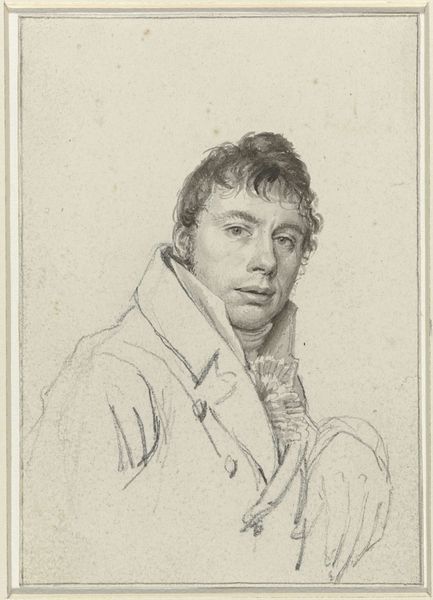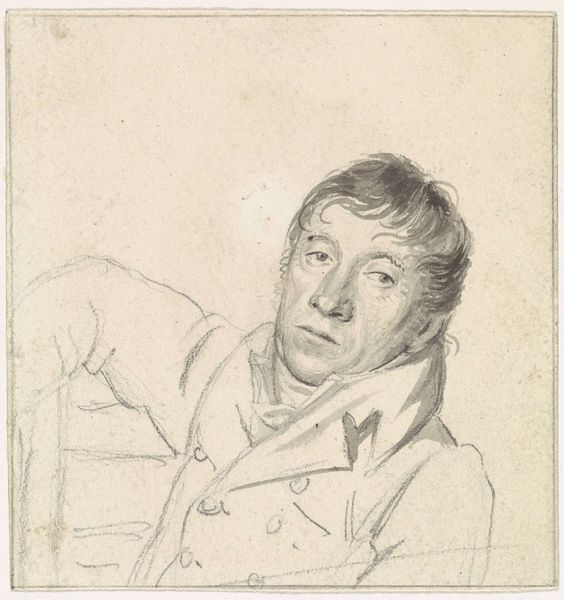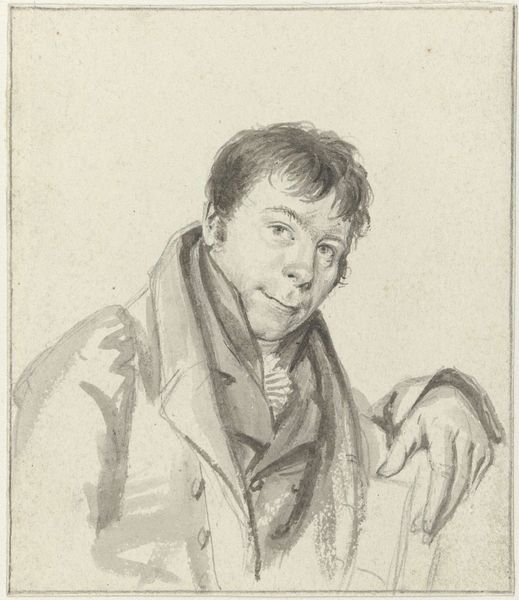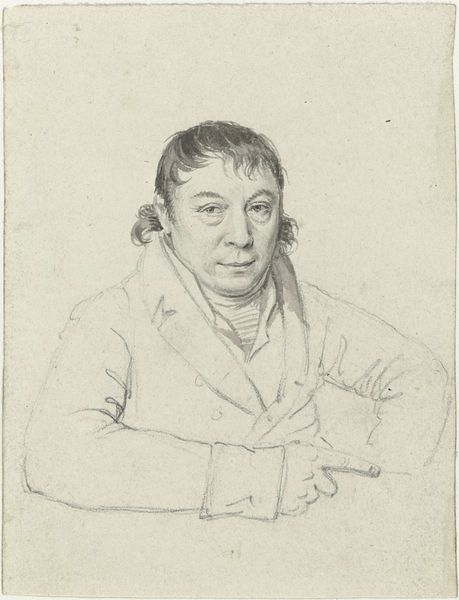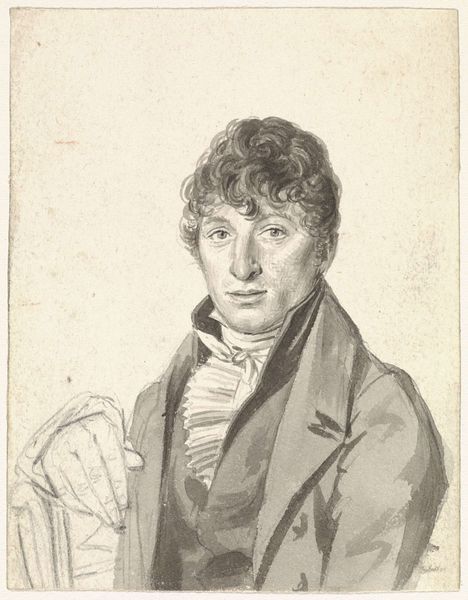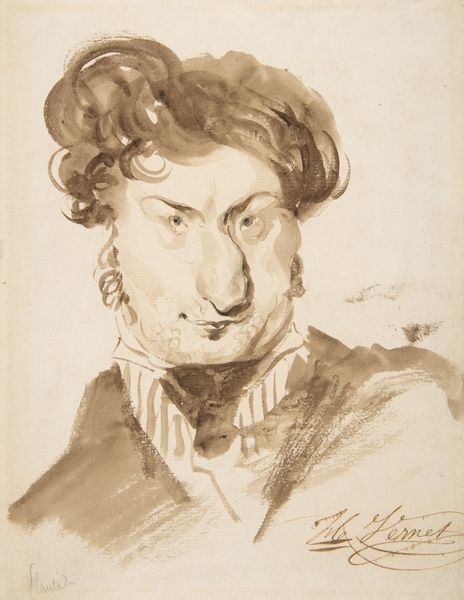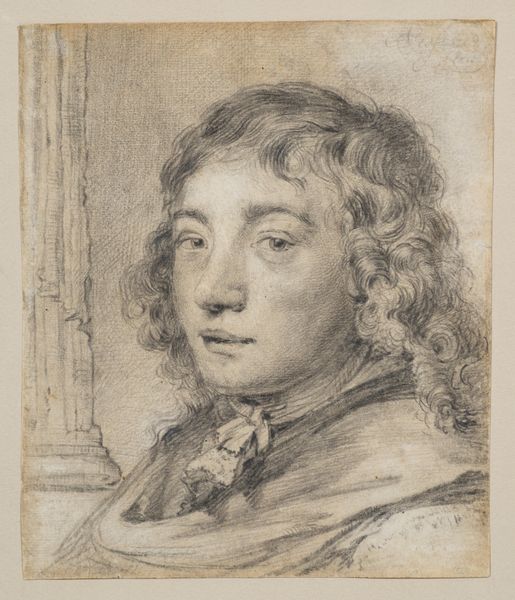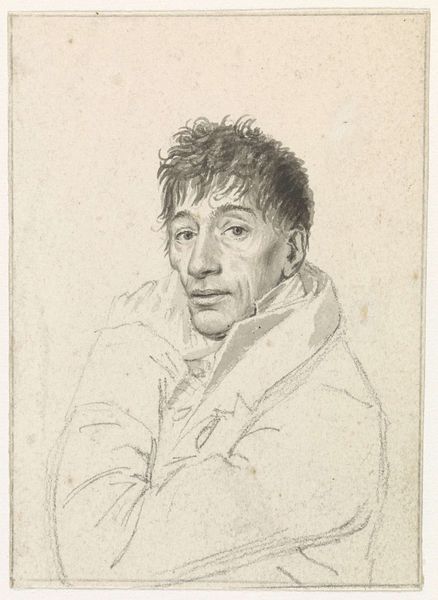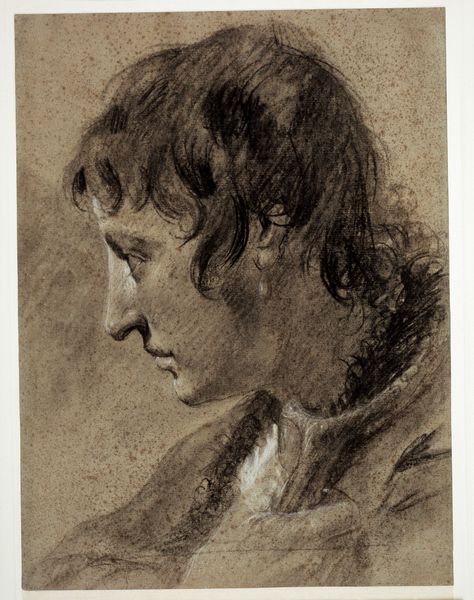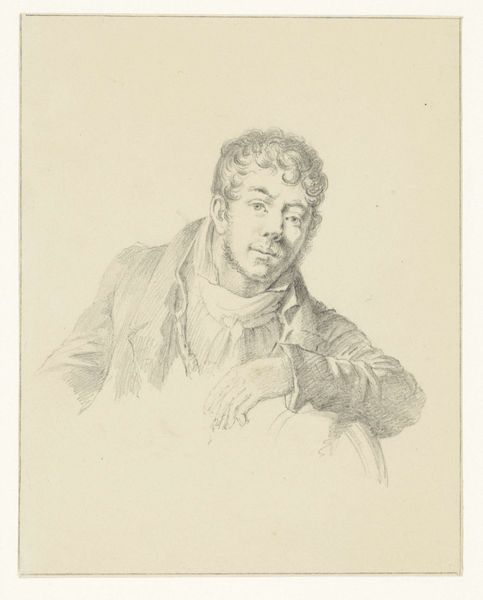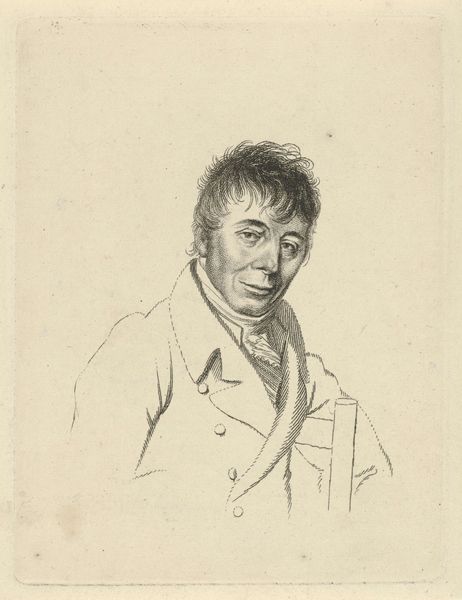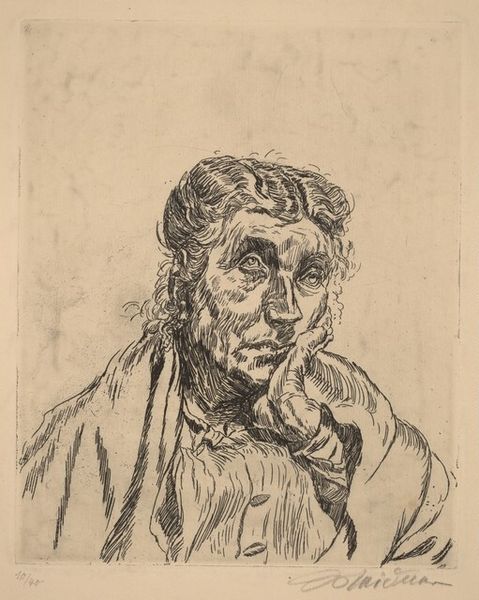
Portrait of a Young Man Holding a Sword c. 1735
0:00
0:00
drawing, paper, chalk, charcoal
#
portrait
#
drawing
#
baroque
#
charcoal drawing
#
paper
#
chalk
#
portrait drawing
#
charcoal
Dimensions: 390 × 296 mm
Copyright: Public Domain
Editor: We’re looking at Giovanni Battista Piazzetta’s "Portrait of a Young Man Holding a Sword," created around 1735. It’s a drawing, mainly charcoal and chalk on paper. I'm immediately struck by its almost photographic realism despite the soft, blended edges. What draws your eye in this piece? Curator: Well, I’m fascinated by the materiality of this portrait. Think about the charcoal and chalk Piazzetta used. Where did those materials come from? Who was processing them? What were the social dynamics surrounding the trade and availability of these art supplies in 18th-century Venice? It highlights the art world as part of a broader economic system. Editor: So, it’s less about the young man's identity and more about the creation process? Curator: Precisely! We often glorify the artist's hand, but rarely consider the labor involved in preparing the ground for that hand to work. Notice the paper too—its texture, its weave. Was it locally sourced, or imported? This drawing embodies the tangible intersection of artistic skill and material production. And then, of course, there's the sword. Editor: How does the sword fit into this materialist reading? Curator: It represents more than just the young man’s social standing, right? It connects to industries – mining for the metal, the forge where it was shaped, and even the sociopolitical power it embodies. Think about the craftspeople whose labor created the very object that signifies privilege. The sword is less about personal valor and more a byproduct of complex production chains and hierarchical social systems. It speaks volumes. Editor: That gives me a totally different way to see the Baroque period, beyond just ornate aesthetics! Considering art as a product of its time, interwoven with social and economic realities… it makes history far more tangible. Curator: Exactly. It makes us question what stories are usually prioritized and whose labor often gets overlooked. I hope you appreciate drawing even more.
Comments
No comments
Be the first to comment and join the conversation on the ultimate creative platform.
